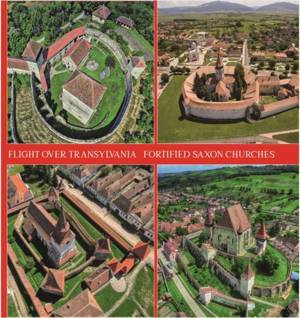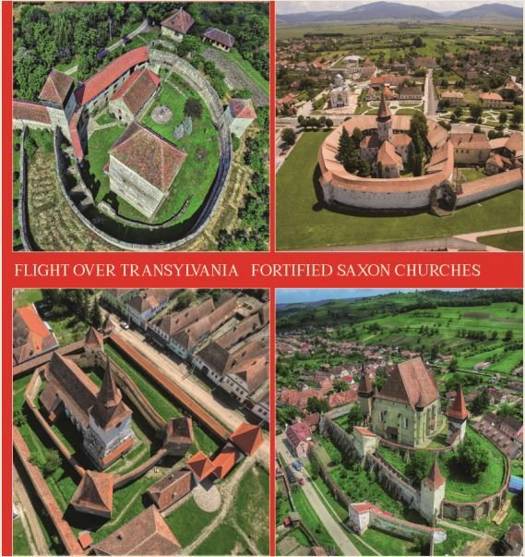
- Afhalen na 1 uur in een winkel met voorraad
- Gratis thuislevering in België vanaf € 30
- Ruim aanbod met 7 miljoen producten
- Afhalen na 1 uur in een winkel met voorraad
- Gratis thuislevering in België vanaf € 30
- Ruim aanbod met 7 miljoen producten
Zoeken
Omschrijving
"One-of-a-kind, yes, they are, our fortified churches!" The Transylvanian Saxons are not at all modest when talking about their sacred structures, not the remaining Saxons, the emigrated ones nor the returned ones. Naturally, there are churches in other places which were reconstructed for purposes of retreat or defense: in Germany (notably in Baden- Württemberg and Bavaria), but also in Luxembourg, Austria and a few in Switzerland. There are many fortified churches in Transylvania, whereas many of them will not survive much longer. The frequency and tenor of reports in the Romanian media lead to the conclusion that the affection towards the Transylvanian Saxons' inheritance is increasing even though the minority has not always been popular. Nurturing an interest in the fortified churches for any length of time, one can't help but develop downright affection for these structures. This sentimental statement may be permitted, because it is simply the truth. Among other causes, one may be especially cited, namely that the Transylvanian fortified churches were not raised by their subjects on behest of some nobles. In fact, citizens and more so, peasants, guarding against the increasing threat from outside decided to make their churches defendable at around 1500 A.D. Somewhat simplified, the process may have been such: Having laboured on the fields all day, the peasants met at their church in the evenings to continue their day's work. This is easily said, however, the family's daily combined effort was barely enough to ensure sufficient supplies for the winter. Each man-hour's work put into the church could have meant hunger for the workers and their families. Nowadays, a counter movement is gradually emerging, too slow to combat the churches' fast decay. Yet, there is hope, as several actors are getting increasingly involved: diverse government and non-government organisations, mostly from Germany, The European Union, the Evangelical Church A. B. in Romania and the Romanian state. Is the effort worth it? Most probably there will be an influx of a lot of funding and some will wonder whether there aren't other causes in Romania that may be more deserving. Why, of all things, should the masonry of an disappearing German minority be built up again? On the part of many scientists and architects involved for many years in the maintenance of Transylvania's fortified churches, one can expect a definite Yes. The list of the UNESCO World Heritage includes seven fortified churches: Biertan, Câlnic, Valea Viilor, Saschiz, Viscri, Prejmer and Dârjiu (Székely fortified church). The sources vary as to numbers, but consult-ing the Online Encyclopedia, Transylvania has about 150 fortified churches, more or less intact. This is down from an estimated 300 in the past. Half of them either decayed or collapsed. In many places they were removed after new weapons rendered the walls redundant. The stones and bricks were used for other buildings.Table of contents:1 Archita Arkeden, 2 Bazna Baaßen, 3 Biertan Birthälm, 4 Boian Bonnesdorf, 5 Bradeni Henndorf, 6 Câlnic Kelling, 7 Câr a Kerz, 8 Cinc or Kleinschenk, 9 Cisnadie Heltau, 10 Cisnadioara Michelsberg, 11 Dealu Frumos Schönberg, 12 Harman Honigberg, 13 Homorod Hamruden, 14 Hosman Holzmengen, 15 Media Mediasch, 16 Me endorf Meschendorf, 17 Prejmer Tartlau, 18 Rupea Reps, 19 Saschiz Keisd, 20 Slimnic Stolzenburg, 21 Valea Viilor Wurmloch, 22 Viscri Deutsch-Weißkirch
Specificaties
Betrokkenen
- Auteur(s):
- Uitgeverij:
Inhoud
- Aantal bladzijden:
- 112
- Taal:
- Engels
Eigenschappen
- Productcode (EAN):
- 9783946954538
- Uitvoering:
- Boek
- Afmetingen:
- 275 mm x 15 mm
- Gewicht:
- 988 g

Alleen bij Standaard Boekhandel
+ 47 punten op je klantenkaart van Standaard Boekhandel
Beoordelingen
We publiceren alleen reviews die voldoen aan de voorwaarden voor reviews. Bekijk onze voorwaarden voor reviews.












